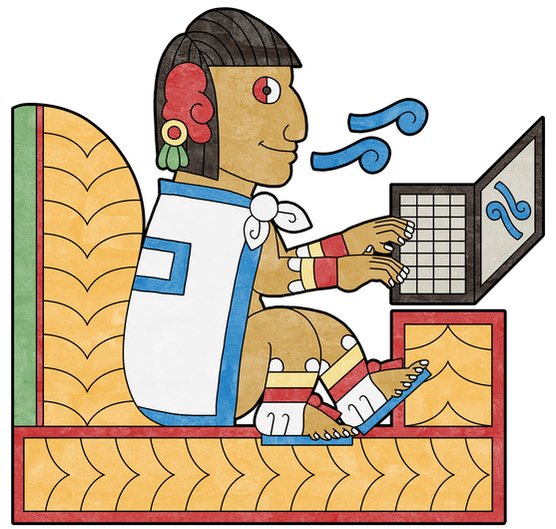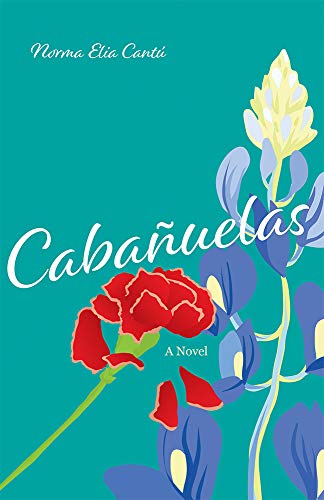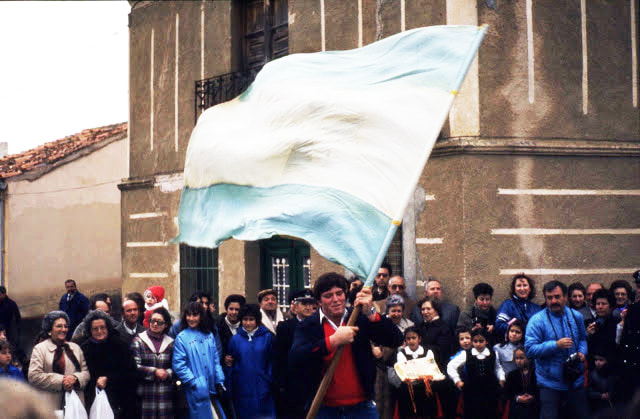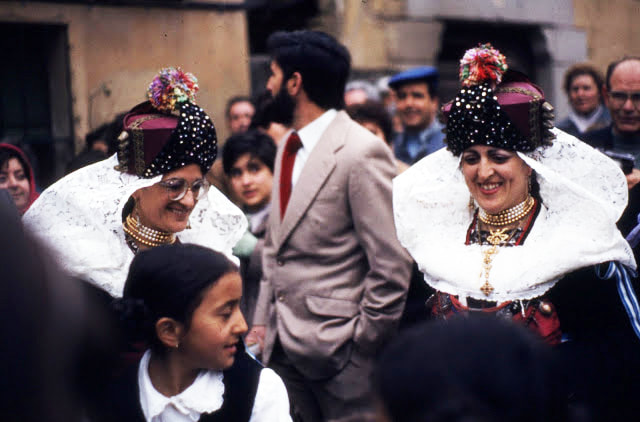An 800 year-old fiesta, |
| ¡Niña de Zamarramala, Recuerda a tu anciana madre Que no descansó bailando Hasta conquistar el Alcázar! ¡Ay, niña de Zamarramala, No te olvides de tu madre! |
| Daughter of Zamarramala, Remember your ancient mother who did not rest dancing until the Alcázar fell. Oh, daughter of Zamarramala, Don’t forget your mother. |
The menfolk dance and honor them all, the women of the town. Young men swing huge banners in a flag dance that awes and inspires everyone. They swirl and flap flags bigger than them. The sound of the flapping adds to the music of the fife and drum corps. The crowds applaud the dancers and their artistry with the flags.
The procession is solemn, with a fife and drum group leading the way. The sculpture of Santa Águeda is carried by women. Shouts of “¡Viva Santa Águeda!” greet the saint along the procession route. It’s Santa Águeda, she of the martyr complex who remained a virgin, even after life in a brothel, she who has saved the day for so many, the truly milagrosa, miracle worker—as many who pray to her attest. She is the patroness of women who are breastfeeding or who have mastectomies due to breast cancer; she seems to adapt to the times, indeed! It is an old fiesta, an old story made current. Santa Águeda, not as famous as Lucía, with her eyes on a platter. Agatha holds her breasts, bloody and puffed up like cupcakes on a tray. Symbols of her sacrifice, her martyrdom. The infidels came but she wouldn’t budge, wouldn’t succumb, and she paid for it with her life. It’s a long story a woman tells Nena: La pobre de la Santa con su martirio, the saint’s martyrdom. In her glory, she died for God.
In this town the women remember and celebrate. All pray to Santa Águeda, and a priest blesses the breads shaped like her breasts that will be part of the special meal. In this town they dress in traditional costume from head to toe: a white embroidered shawl, a manto or mantilla framing the face. A kind of mitre called a montera holds the mantilla in place—elaborately
The ritual burning of the pelele, a man in effigy, is part of the fiesta, an obvious reference to the desire to end the machismo that reigns in these lands. Nena thinks of the burning of the zozobra in New Mexico. Although at
Only women dance while the men play the sones with drum and flute. Nena befriends an older woman and her daughter—both are dressed in traditional dress for the occasion. They introduce her to the two alcaldesas, and Nena congratulates them, explains what she is doing. She photographs them as they walk, dance, and lead the way to the church.
The alcaldesas invite Nena to join them in the private meal. All the town’s married women—whether dressed as Águedas or not—go into a large room that could be the church hall or the town’s meeting place. The only man allowed for the ceremonial lunch is the church priest, who after all wears a skirt.
Nena stays quiet and eats the chorizo stew she’s offered and the pastel, traditional sweet cake, and drinks the local wine. She’s an intruder at the private fiesta with the women. But she still belongs; after all, isn’t she a woman? But. She’s not married, and this is only for married women in town who have earned their place at the celebration, who are to be fed by the men. Her newfound friends allay her concerns and tell her she’s been invited by the Alcaldesas so she belongs. Y punto. Nena looks like a local, but taller, wears jeans and a white cotton shirt. The photos show a smiling priest surrounded by the townswomen. But Nena is not in the photo, because she is taking the photo with her trusty Pentax.
Yes, Nena feels special. Como ellas. Como todas. She wonders if she will ever be married. If she will ever pass on her traditions, her treasures to a beloved daughter. Nena is certain that traditions such as the Águedas of Zamarramala in this medieval village will survive if only because of its recently granted status as a UNESCO Heritage Site. These mothers will pass it on to their daughters, of that there is no doubt. They will bequeath their gold jewelry to their daughters and their granddaughters: earrings, bracelets, necklaces, especially the gold cross. They will place the white mantos on their heads, wear the montera like a crown.
From Cabañuelas: A Novel by Norma Elia Cantú. Copyright © 2019 University of New Mexico Press, 2019.
 Photo by Ralph Grajeda
Photo by Ralph Grajeda Archives
July 2024
June 2024
April 2024
March 2024
November 2023
August 2023
July 2023
June 2023
May 2023
April 2023
February 2023
January 2023
December 2022
November 2022
September 2022
August 2022
July 2022
June 2022
May 2022
April 2022
March 2022
February 2022
December 2021
November 2021
September 2021
August 2021
July 2021
June 2021
May 2021
April 2021
December 2020
September 2020
July 2020
November 2019
September 2019
July 2019
June 2019
May 2019
April 2019
March 2019
January 2019
December 2018
November 2018
October 2018
September 2018
August 2018
June 2018
May 2018
April 2018
March 2018
February 2018
January 2018
February 2010
Categories
All
Archive
Aztec
Aztlan
Barrio
Bilingualism
Borderlands
Boricua / Puerto Rican
Brujas
California
Chicanismo
Chicano/a/x
ChupaCabra
Colombian
Colonialism
Contest
Contest Winners
Crime
Cuba
Cuban American
Cuento
Cultura
Culture
Curanderismo
Death
Detective Novel
Día De Muertos
Dominican
Ebooks
El Salvador
Español
Español & English
Excerpt
Extra Fiction
Extra Fiction Contest
Fable
Family
Fantasy
Farmworkers
Fiction
First Publication
Flash Fiction
Genre
Guatemalan American
Hispano
Historical Fiction
History
Horror
Human Rights
Humor
Immigration
Indigenous
Inglespañol
Joaquin Murrieta
La Frontera
La Llorona
Latino Scifi
Los Angeles
Magical Realism
Mature
Mexican American
Mexico
Migration
Music
Mystery
Mythology
New Mexico
New Mexico History
Nicaraguan American
Novel
Novel In Progress
Novella
Penitentes
Peruvian American
Pets
Puerto Rico
Racism
Religion
Review
Romance
Romantico
Scifi
Sci Fi
Serial
Short Story
Southwest
Tainofuturism
Texas
Tommy Villalobos
Trauma
Women
Writing
Young Writers
Zoot Suits
Donate and Make Literature Happen
is published by the Somos En Escrito Literary Foundation,
a 501 (c) (3) non-profit, tax-exempt corporation. EIN 81-3162209





 RSS Feed
RSS Feed